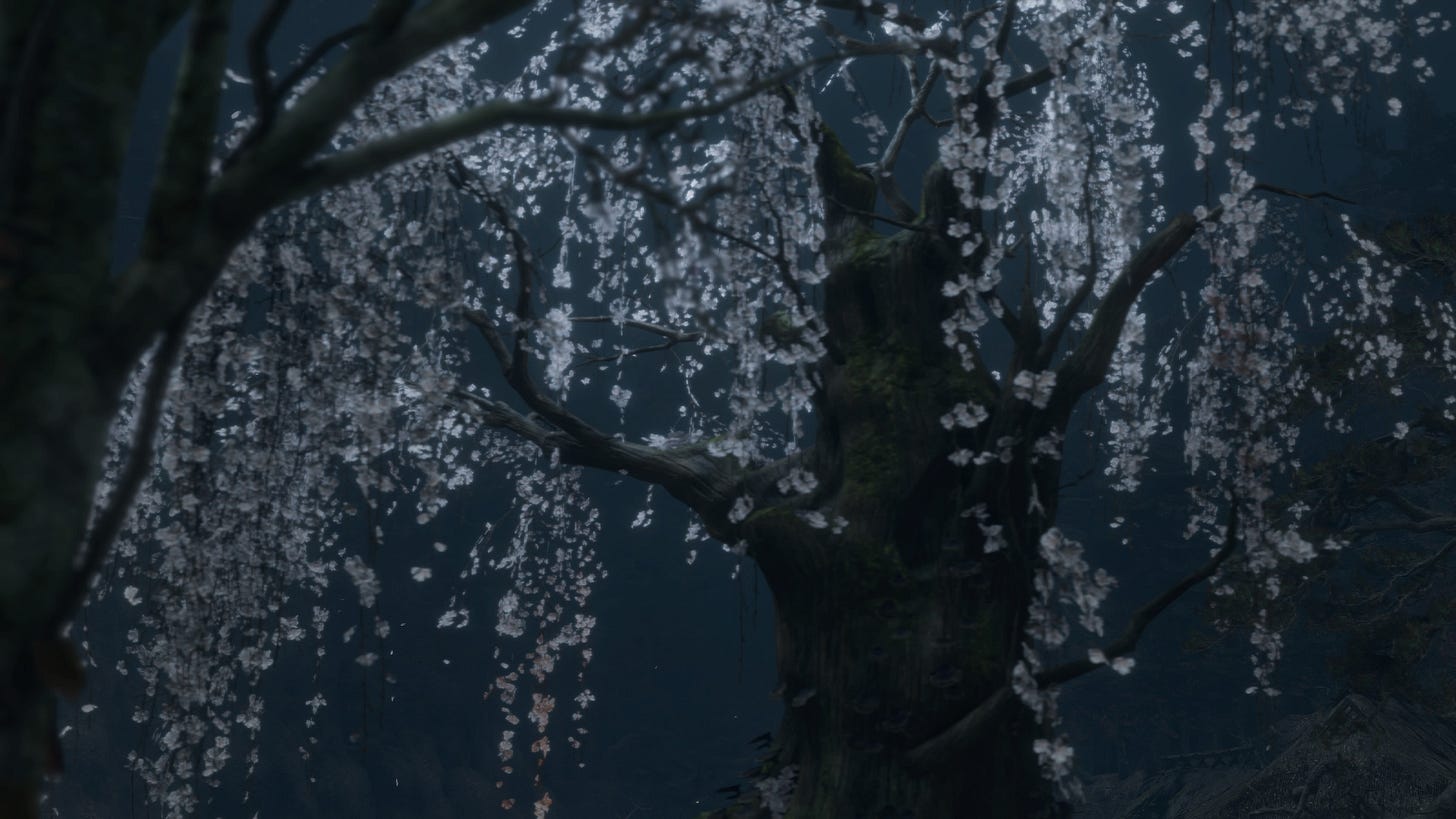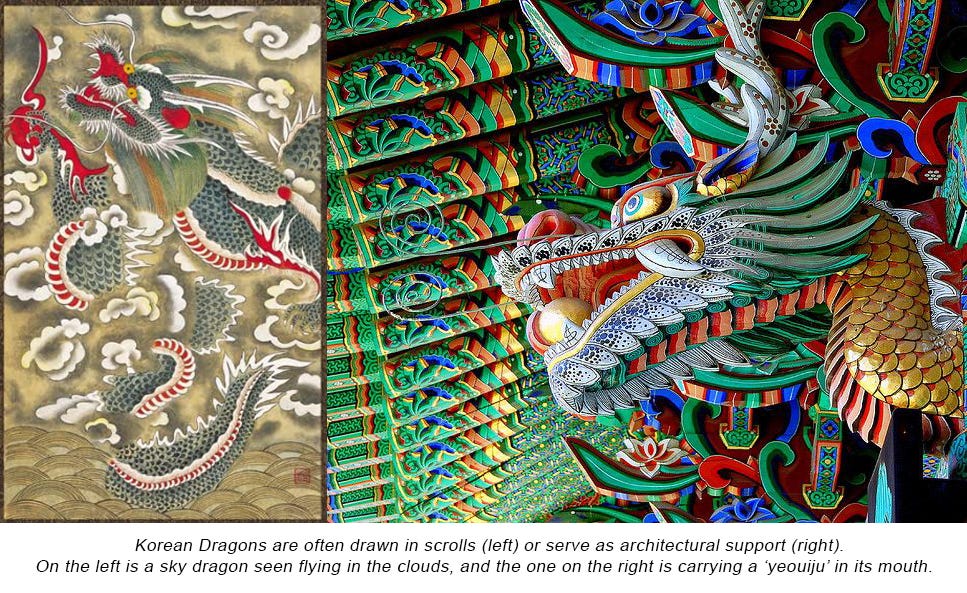A mythological rabbit hole 🐇 : The Divine Dragon 🐉 in Sekiro 🏯
Getting acquainted with the art and mythology behind the Divine Dragon in "Sekiro: Shadows Die Twice"
2024 is the Year of the Dragon. We will be exploring some literature around dragons through this article with the blessings of the dragons 🐲
Inspiration for this post
While I was watching this excellent video essay on dragons and Dragonology, I saw the image below flash for a moment. I had to rewind and pause the video to take a good look at the frame.
The Divine Dragon from Sekiro: Shadows die Twice
This was the Divine Dragon, a boss in the game Sekiro: Shadows die Twice, something I did not know at the time.
Finding the dragon
The first thing which came into my mind when I saw this dragon was, “how the funk is this dragon so beautiful and rad at the same time ?”. I had to take a screenshot, Image Search it in Google and figure out which game was this dragon from.
Why do this analysis ?
For someone who loves Japanese art, I was mind blown to see this dragon popping out of a giant cherry blossom tree, complete with a missing arm and a cool sword in its claw. The design of this dragon was extremely intriguing to me.
On y va
With that, I decided to do a short rabbit hole diving in to the design and origins of this dragon.
Design Analysis and Mythological Origins
The four basic elements to the dragon’s design
We can understand a lot of things from the way this dragon in composed in the scene. The four basic elements using which we can use to further our analysis are:
The environment the dragon resides in
The dragon itself
The sword held by the dragon (seems to have a significance)
The giant cherry blossom tree from which the dragon erupts
The above 4 elements make a major part of the composition of the scene. Let’s discuss each of these elements one by one.
In this article we cover the environment and the dragon, in the next one we shall cover the sword and the tree.
The Environment
The player is teleported to the Divine Realm where the player has to battle the Divine Dragon. A fitting battlefield.
The Divine Realm
The setting is the Divine Realm, a place that is ethereal and otherworldly, with the dragon itself emerging from a large sakura, or cherry blossom tree.1
Weather and Lightning
Dragons and Rain
In Chinese mythology, dragons are believed to bring rain.
Lightning and Thunder
When lightning flashes, it is thought to be the gleam of a dragon's scales or its eyes, and thunder is the rumble of its movement or its mighty roar. 7
The Gloom
In the game itself the atmosphere is gloomy with clouds covering the sky and lightning surging throughout. These natural phenomena make this dragon’s presence even more . This also checks out the mythology about the presence of a dragon causing meteorological anomalies.

The Dragon
The Serpentine Beast
The dragon itself is a serpentine figure which looms over the character in the game. The dragon swings its long neck and arms simultaneously balancing the 6 pronged sword to attack the character. The design on this is so beautiful that the dragon looks almost real to me.
Dragons in Game of Thrones vs. the Divine Dragon
Emerging from the cherry blossom trees, the Divine Dragon is a formidable figure. There are dragons in other mythologies as well but this is like no other dragon we usually see in medieval fantasy series like Game of Thrones. What’s up with the basic design of this dragon ? Why does it look more like a snake than a dragon. We will explore this further in the following part.
Dragons in Eastern Mythology
Dragons and Waterfalls
…As a VERY broad statement though, in Eastern Mythology, dragons are commonly associated with rain and the weather, they are also associated with moving bodies of water including springs, waterfalls, rivers, seas and oceans…1
Dragon’s home and transcendence
In the tapestry of Eastern mythology, dragons are often depicted as majestic creatures closely connected to waterfalls and other bodies of moving water.
These dragons are believed to inhabit the swirling pools at the base of falls, where the water's perpetual motion and mist create an otherworldly realm fit for such divine beings. The image of a dragon ascending a waterfall is particularly iconic, symbolizing its journey toward the heavens and for spiritual transcendence.
Climbing the waterfall
This motif is celebrated in various cultural festivals and artworks, where the waterfall serves as a bridge between the earthly and the celestial, a path that only the most virtuous and mighty dragons can navigate. The waterfall, with its raw power and grace, becomes a natural throne for these guardians of water.
The waterfall dragon in Pokémon
In the world of Pokémon, Magikarp and Gyarados present a compelling narrative that echoes the transformational myths of Eastern dragons.
Magikarp, a seemingly weak and ineffective Pokémon, evolves into the formidable Gyarados, a creature that embodies the awe-inspiring power and majesty often associated with dragons in Eastern mythology.
Carps and the Dragon Gate
This metamorphosis from vulnerability to strength is reminiscent of the legendary carp leaping over the Dragon Gate to become a dragon, a story celebrated across various Eastern cultures. This narrative not only ties Magikarp and Gyarados to the lore of Eastern dragons but also serves as a metaphor for growth, perseverance, and the potential within all beings to transcend their limitations.

We shall look into other eastern dragons in popular culture towards in the next part of this rabbit hole.
Origins of Dragons as a Snake
The dragon’s serpentine design is rooted in mythology. We shall discuss this further in one of the below sections on Korean Dragons.
A Dragon from the West
A dragon’s expedition
…We also learn from the remnant of its memory that it is referred to as the Divine Dragon of the Everblossom and that it came to Ashina from the West long ago and took root there…1
Diving deeper into the lore of the Divine Dragon of the Everblossom, it's fascinating to uncover that this majestic creature wasn't originally from the lands of Ashina but ventured from the West, finding its sanctuary within the serene beauty of the Everblossom tree.
Why was the dragon traveling to the West?
The dragon’s origins from the West and its choice to root itself in Ashina's soil, intertwining its fate with the land, is quite intriguing. It's like the dragon wasn't just passing through but was searching for something, a place where it could intertwine its essence with the land, becoming a guardian of sorts.
A Korean Dragon
What makes us think that this dragon might be Korean?
…You see, the Long, or Chinese dragon, is usually depicted with 5 claws on each foot. Meanwhile, the Ryu, or Japanese Dragon is more commonly depicted with 3 claws. So why does the Divine Dragon have 4? Well, the Yong (Forgive me if this isn't considered the proper way to spell its name), the Korean Dragon has four claws which may indicate a more Korean origin for the Divine Dragon…1
The above excerpt is from a reddit post which goes deep into the analysis of the Divine Dragon and explains why this dragon might be Korean.
Korean Dragons and their relationship to snakes
Korean dragons, known as "Yong" or "Yongwang" embody a blend of serpentine elegance and majestic dragon-like features. They are often depicted as benevolent beings, wielding control over water, weather, and agriculture, mirroring the protective and nurturing aspects attributed to snakes in various cultures. 8
Korean Dragons vs. Western Dragons
Dragons in western mythology are commonly associated with fire, it’s interesting to see that this is a contrast from the dragons in eastern mythology.
Unlike their Western counterparts, Korean dragons are not fire-breathing monsters but rather symbols of wisdom, power, and goodwill, often associated with rainfall and rivers, which are crucial for farming. This intertwining of dragon and snake characteristics highlights a unique cultural perspective where the line between the mythical and the natural world is beautifully blurred. 8
…The divine dragon does come from the divine realm, does seem to summon lightning and more importantly, rainclouds which fits the descriptions of a Korean dragon, but the lack of a yeouiju is what makes me hesitant to label it a Korean dragon…1
This dragon comes pretty close to being one from the Korean folklore but the lack of “Yeouiju” restricts that based on the excerpt above. The “Yeouiju” is a massive pearl which “Yong” is supposed to be holding in his/her/their mouth. 8
But, the design of the Dragon itself comes closest to that of a Korean one, is something we can establish for now.
In the next part of this rabbit hole we shall explore the other two elements from the Divine Dragon’s composition; the sword and the Everblossom.










